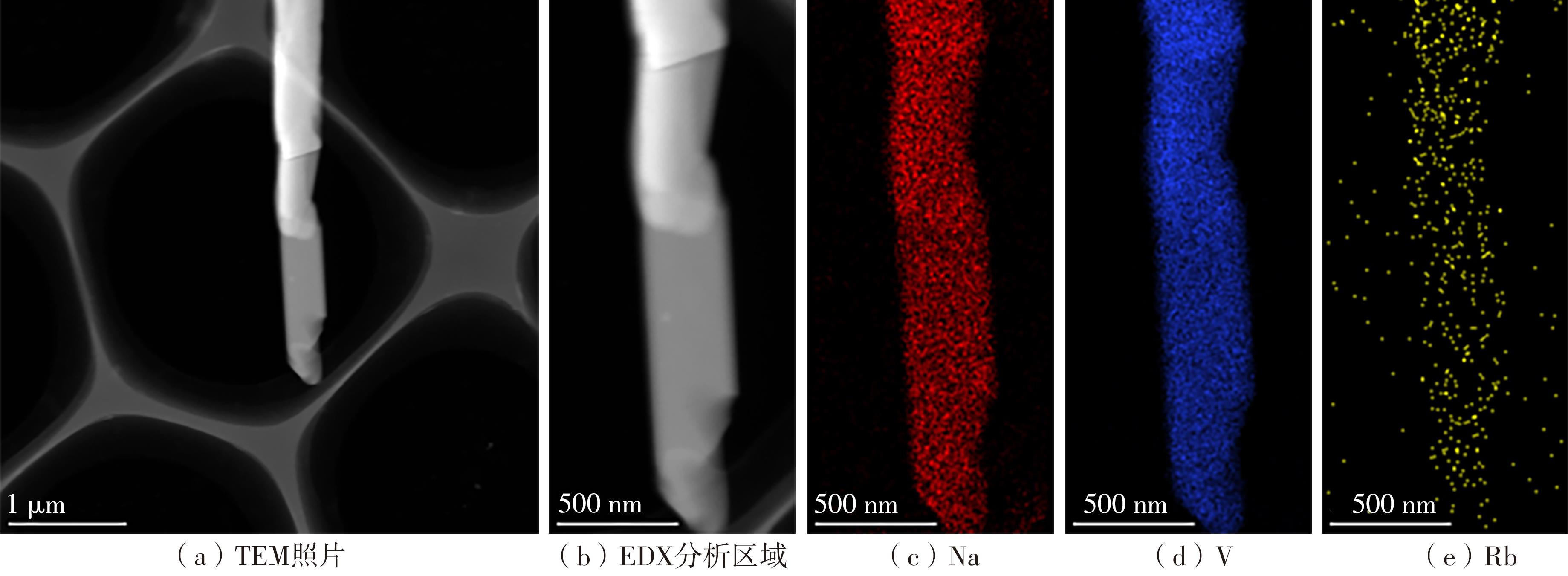| 1 |
WHITTINGHAM M S .Introduction:batteries[J].Chemical Reviews,2014,114(23):11413.
|
| 2 |
YAN M Y, HE P, CHEN Y,et al .Water-lubricated intercalation in V2O5·nH2O for high-capacity and high-rate aqueous rechargeable zinc batteries[J].Advanced Materials,2018,30(1):1703725-1-6.
|
| 3 |
ZHU K Y, WU T, HUANG K V .NaCa0.6V6O16·3H2O as an ultra-stable cathode for Zn-ion batteries:The roles of pre-inserted dual-cations and structural water in V3O8 layer[J].Advanced Energy Materials,2019,9(38):190 1968-1-12.
|
| 4 |
MUENCH S, WILD A, FRIEBE C,et al .Polymer-based organic batteries[J].Chemical Reviews,2016,116(16):9438-9484.
|
| 5 |
AKINYELE D O, RAYUDU R K .Review of energy storage technologies for sustainable power networks[J].Sustainable Energy Technologies and Assessments,2014,8:74-91.
|
| 6 |
HAMEER S, VAN NIEKERK J L .A review of large-scale electrical energy storage[J].International Journal of Energy Research,2015,39(9):1179-1195.
|
| 7 |
GOODENOUGH J B, KIM Y .Challenges for rechargeable Li batteries[J].Chemistry of Materials,2010,22(3):587-603.
|
| 8 |
HU P, ZHU T, WANG X P,et al .Highly durable Na2V6O16·1.63H2O nanowire cathode for aqueous zinc-ion battery[J].Nano Letters,2018,18(3):1758-1763.
|
| 9 |
PAN H L, SHAO Y Y, YAN P F,et al .Reversible aqueous zinc/manganese oxide energy storage from conversion reactions[J].Nature Energy,2016,1(5):1-17.
|
| 10 |
XU C J, LI B H, DU H D,et al .Energetic zinc ion chemistry:The rechargeable zinc ion battery[J].Angewandte Chemie,2012,124(4):957-959.
|
| 11 |
ALFARUQI M H, MATHEW V,GIM J,et al .Electrochemically induced structural transformation in a γ- MnO2 cathode of a high capacity zinc-ion battery system[J].Chemistry of Materials,2015,27(10):3609-3620.
|
| 12 |
ZHANG N, CHENG F Y, LIU Y C,et al .Cation-deficient spinel ZnMn2O4 cathode in Zn(CF3SO3)2 electrolyte for rechargeable aqueous Zn-ion battery[J].Journal of the American Chemical Society,2016,138(39):12894-12901.
|
| 13 |
ZHANG B H, LIU Y, WU X W,et al .An aqueous rechargeable battery based on zinc anode and Na0.95MnO2 [J].Chemical Communications,2014,50(10):1209-1211.
|
| 14 |
LIU Z, PULLETIKURTHI G, ENDRES F .A Prussian blue/zinc secondary battery with a bio-ionic liquid-water mixture as electrolyte[J].ACS Applied Materials & Interfaces,2016,8(19):12158-12164.
|
| 15 |
ZHANG L Y, CHEN L, ZHOU X F,et al .Morphology-dependent electrochemical performance of zinc hexacyanoferrate cathode for zinc-ion battery[J].Scientific Reports,2015,5(1):18263.
|
| 16 |
HOU Z G, ZHANG X Q, LI X N,et al .Surfactant widens the electrochemical window of an aqueous electrolyte for better rechargeable aqueous sodium/zinc battery[J].Journal of Materials Chemistry A,2017,5(2):730-738.
|
| 17 |
ZHANG L Y, CHEN L, ZHOU X F,et al .Towards high-voltage aqueous metal-ion batteries beyond 1.5 V:The zinc/zinc hexacyanoferrate system[J].Advanced Energy Materials,2015,5(2):1400930-1-5.
|
| 18 |
MING J, GUO J, XIA C,et al .Zinc-ion batteries:Materials,mechanisms,and applications[J].Materials Science & Engineering,2019,135:58-84.
|
| 19 |
衡永丽,谷振一,郭晋芝,等 .水系锌离子电池用钒基正极材料的研究进展[J].物理化学学报,2021,37(3):2005013-1-16.
|
|
HENG Yong-li, GU Zhen-yi, GUO Jin-zhi,et al .Research progresses on vanadium-based cathode materials for aqueous zinc-ion batteries[J].Acta Physico-Chimica Sinica,2021,37(3):2005013-1-16.
|
| 20 |
HE H N, JIN G H, WANG H Y,et al .Annealed NaV3O8 nanowires with good cycling stability as a novel cathode for Na-ion batteries[J].Journal of Materials Chemistry A,2014,2(10):3563-3570.
|
| 21 |
CAO Y H, FANG D, WANG C,et al .Novel aligned sodium vanadate nanowire arrays for high-performance lithium-ion battery electrodes[J].RSC Advances,2015,5(53):42955-42960.
|
| 22 |
CAO Y H, WANG J Y, CHEN X T,et al .Nanostructured sodium vanadate arrays as an advanced cathode material in high-performance sodium-ion batteries[J].Materials Letters,2019,237:122-125.
|
| 23 |
KIM S J, TANG C R, SINGH G,et al .New insights into the reaction mechanism of sodium vanadate for an aqueous Zn ion battery[J].Chemistry of Materials,2020,32(5):2053-2060.
|
| 24 |
HE P, ZHANG G B, LIAO X B,et al .Sodium ion stabilized vanadium oxide nanowire cathode for high-performance zinc-ion batteries[J].Advanced Energy Materials,2018,8(10):1702463-1-6.
|
| 25 |
DONG Y F, LI S, ZHAO K N,et al .Hierarchical zigzag Na1.25V3O8 nanowires with topotactically encoded superior performance for sodium-ion battery cathodes[J].Energy & Environmental Science,2015,8(6):1267-1275.
|
| 26 |
WANG J, POLLEUX J,LIM J,et al .Pseudocapacitive contributions to electrochemical energy storage in TiO2 (anatase) nanoparticles[J].Journal of Physical Chemistry C,2007,111(140):14925-14931.
|
| 27 |
SIMON P, GOGOTSI Y, DUNN B .Where do batteries end and supercapacitors begin[J].Science,2014,343(6176):1210-1211.
|
| 28 |
CONWAY B E, BIRSS V, WOJTOWICZ J .The role and utilization of pseudocapacitance for energy storage by supercapacitors[J].Journal of Power Sources,1997,66(1/2):1-14.
|
| 29 |
LINDATROM H, SODERGREN S, SOLBRAND A,et al .Li+ ion insertion in TiO2 (anatase).2.Voltammetry on nanoporous films[J].Journal of Physical Chemistry B,1997,101(39):7717-7722.
|
| 30 |
SOUNDHARRAJAN V, SAMBANDAM B, KIM S,et al .Na2V6O16·3H2O barnesite nanorod:An open door to display a stable and high energy for aqueous rechargeable Zn-ion batteries as cathodes[J].Nano Letters,2018,18(4):2402-2410.
|
| 31 |
GUO X, FANG G Z, ZHANG W Y,et al .Mechanistic insights of Zn2+ storage in sodium vanadates[J].Advanced Energy Materials,2018,8(27):1801819-1-7.
|















